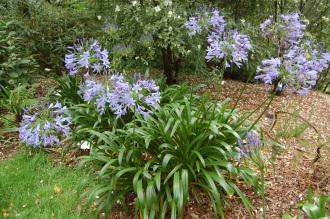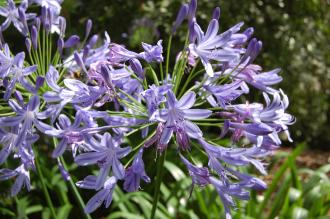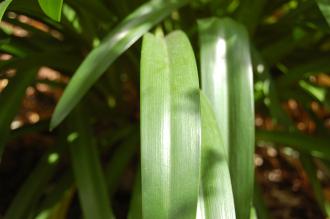
Agapanthus umbellatus (28/07/2014, Botanique National de Brest, France)
Position: Full sun
Soil: Well drained soil
Flowering period: Mid to late summer
Eventual Height: 1.2m
Eventual Spread: 60cm
Hardiness: 8a, 8b, 9a, 9b, 10a, 10b, 11a
Family: Amaryllidaceae
Agapanthus umbellatus is an evergreen perennial with a clump forming habit. Its dark green leaves composed of basal, linear leaves with simple margin. Its dark blue hermaphrodite flowers are tubular, arranged as rounded terminal umbles, up to 20cm across on upright stems. Its fruit are a three sided capsule which contain black shiny seeds. Its roots are rhizomes which aids its spread.

Agapanthus umbellatus Flower (28/07/2014, Botanique National de Brest, France)
Agapanthus umbellatus, commonly known as the Lily of the Nile, Blue Giant African Lily is native to South Africa. In its native habitat it grows on moist grassland and slope.
The etymological root of the binomial name Agapanthus is derived from the Greek agap meaning ‘love’ and anthos meaning ‘flower’. Umbellatus is derived from the Latin umbella meaning ‘parasol’, in reference to the flower arrangement.
Agapanthus umbellatus may be useful to the landscape architect as a herbaceous perennial in maritime locations. Once established this plant is drought tolerant for short periods of time.
Ecologically, Agapanthus umbellatus flowers are attractive to many species of pollinating insects.

Agapanthus umbellatus Leaf (28/07/2014, Botanique National de Brest, France)
Agapanthus umbellatus prefers moist, fertile, well-drained soils. It tolerates most pH of soil.
Agapanthus umbellatus requires little maintenance. The plant may be cut back in autumn, if desired. They may be propagated from offsets or by dividing the rootstock in early spring or autumn.

